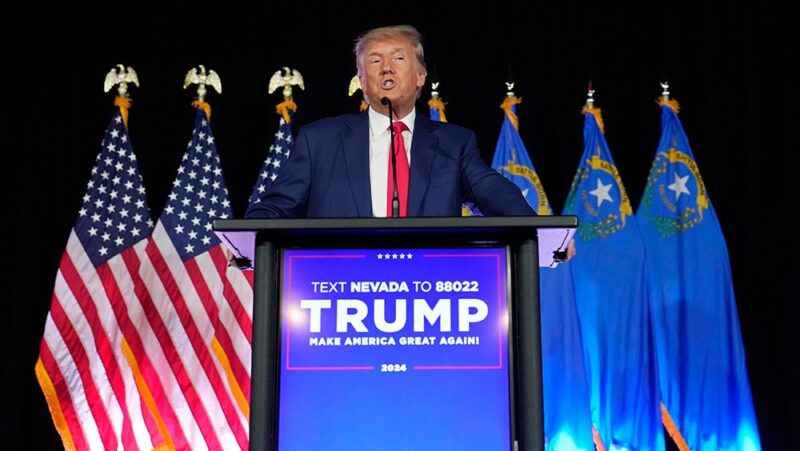School Dress Codes: A First Amendment Breakdown

One constitutional controversy in public schools today concerns mandatory school dress codes and uniforms.
Proponents contend such measures instill discipline and prevent gang-related violence. They say uniforms and some school dress codes lessen peer pressure aggravated by socioeconomic divisions, promote a unity of spirit and help administrators more quickly identify trespassers on school grounds. Some school administrators say that such restrictions help prepare students to “dress for success” in the job market.
Opponents counter that such measures suppress student individuality and personal freedom. They argue that students could become alienated if school officials close off one of their few avenues of self-identification and expression. They also question whether restrictive school dress codes really make schools safer. Many parents argue that these restrictive policies also infringe on the parents’ freedom in rearing their children.
The push for uniform student dress and school dress codes
Many public schools adopted dress codes and uniforms after then-President Bill Clinton endorsed uniforms in his 1996 State of the Union address:
“I challenge all our schools to teach character education, to teach good values and good citizenship. And if it means that teenagers will stop killing each other over designer jackets, then our public schools should be able to require their students to wear school uniforms.”
Long Beach Unified School District reported seeing a marked reduction in school disciplinary problems and violence after instituting a mandatory school-uniform policy. Public school districts across the country have followed suit. Other districts have not mandated uniforms, but have instituted dress codes that prohibit certain clothing. Commonly prohibited attire includes clothing that reveals too much of the body, contains racially insensitive symbols, promotes alcohol or tobacco, or suggests violence.
Ironically, both opponents and proponents of student dress codes point to the same U.S. Supreme Court ruling to support their positions — Tinker v. Des Moines Independent Community School District (1969). In this famous decision, the Court ruled 7-2 that public school officials could not censor student expression — the wearing of black armbands, in that case — unless they could reasonably forecast that the student expression would cause substantial disruption or material interference with school activities or would invade the rights of others.
Dress-code opponents emphasize that students convey a multitude of messages on their clothing, ranging from political slogans, music lyrics, and support for a favorite athletic team. They argue that school officials cannot censor student expression unless they can show that the clothing will disrupt the school environment. They contend that Tinker stands for the fundamental principle that students have the right to wear clothing with messages, just as the students in the 1960s could wear black armbands to protest the Vietnam War.
However, those who favor school dress codes cite a specific passage from Tinker in support of their position. In Tinker, the Court wrote: “The problem posed by the present case does not relate to regulation of the length of skirts or the type of clothing, to hair style or deportment.” Yet opponents seize on this language to emphasize that even Tinker recognized that disputes over types of clothing do not raise the same free-speech interests as regulation of the type of expression at issue with armbands.
Legal standards
Some courts apply the Tinker standard to determine if school officials can regulate student clothing. This standard asks whether school officials can reasonably forecast whether the student expression will cause a substantial disruption or material interference with school activities. For instance, a three-judge panel of the 4th U.S. Circuit Court of Appeals recently struck down a portion of a school’s dress code in Newsom v. Albemarle County School Board that prohibited clothing depicting weapons.
The controversy arose after school officials forced student Alan Newsom to quit wearing his National Rifle Association T-shirt, which depicted three silhouettes of men holding guns and bore the message “NRA Sports Shooting Camp.” The school policy prohibited “messages on clothing, jewelry, and personal belongings that relate to … weapons.”
In its December 2003 decision, the 4th Circuit determined that the policy was too broad and was not necessary to prevent disruptions at school. The court explained that the language of the school dress code would prohibit clothing bearing the state seal of Virginia, which depicts a woman holding a spear, or clothing bearing the athletic mascot of the University of Virginia, which contains two crossed sabers.
Many courts will analyze student dress cases under a threshold test established by the Supreme Court in Texas v. Johnson. This famous case involved the constitutionality of flag burning as a form of free speech and established a test that determined that speech was permissible if it was purely expressive and didn’t impede another function. Applying this two-part test asks to students: (1) whether the student intended to convey a particular message, and (2) whether reasonable observers would understand this message. A federal district court in New Mexico applied this standard to rule that a public school student did not have a First Amendment right to wear sagging jeans.
In Bivens v. Albuquerque Public Schools, the judge questioned whether sagging pants conveyed any particular message: “Sagging is not necessarily associated with any single racial or cultural group, and sagging is seen by some merely as a fashion trend followed by many adolescents all over the United States.” The judge said that even if sagging somehow constituted a message, the student failed to establish that reasonable observers would understand any message coming from the wearing of sagging pants.
Other courts have applied a test developed from the U.S. Supreme Court’s 1968 decision on draft-card burning, U.S. v. O’Brien, to determine whether a school dress code is constitutional. Under the O’Brien test, a school dress code or uniform policy is constitutional if it:
- Is authorized under state law.
- Advances an important government interest.
- Is not related to the suppression of free expression.
- Only incidentally restricts free expression in a minimal fashion.
The 5th U.S. Circuit Court of Appeals has used the O’Brien test more than once to uphold a school-uniform policy against constitutional challenge, as in Canady v. Bossier Parish School Board:
“The School Board’s purpose for enacting the uniform policy is to increase test scores and reduce disciplinary problems throughout the school system,” the appeals court wrote in Canady. “This purpose is in no way related to the suppression of student speech.”
Another legal standard is sometimes applied to student dress-code disputes. Courts will apply the Supreme Court’s 1986 decision Bethel School District v. Fraser, which allowed a school to punish a student for giving a vulgar speech before the student assembly. Some courts will use the Fraser precedent to prohibit students from wearing any clothing that contains vulgar, lewd or plainly offensive expression. For example, a federal judge in Virginia ruled that Norfolk school officials could prohibit a student from wearing a shirt with the anti-drug message “Drugs Suck.” According to school officials and the federal judge, the word “suck” was a vulgar term with sexual connotations that could be prohibited by school officials.
When applying these varying legal standards, many courts have upheld school dress policies, rejecting constitutional challenges by students. For example, the 5th Circuit has upheld school-uniform policies in Louisiana (in Canady) and Texas. Many students have lost when they challenged their suspension for wearing Confederate flag clothing. The 11th U.S. Circuit Court of Appeals recently upheld a school district’s flat ban on the Confederate flag.
However, sometimes students do prevail in dress-code disputes. Because the Tinker decision emphasized that the students wearing the black armbands were engaged in political speech — the type of speech the First Amendment was most designed to protect — students wearing clothes containing political slogans and other messages can argue that a reviewing court should apply the Tinker standard to protect their right to wear political-slogan clothing.
For example, Michigan high school student Bretton Barber successfully obtained a preliminary injunction in a federal district court that prevented school officials from banning his T-shirt showing a photograph of President George W. Bush with the words “International Terrorist.” U.S. District Judge Patrick J. Duggan ruled in October 2003 in favor of the student because, he said, school officials had silenced Barber’s expression more out of a dislike of its message than fear that it might disrupt school.
In other words, Duggan applied the Tinker standard and determined that the school officials failed to meet that test. In fact, the judge compared Barber’s shirt opposing President Bush’s policies in Iraq to the students from the Tinker case who opposed the Vietnam War.
“Clearly the tension between students who support and those who oppose President Bush’s decision to invade Iraq is no greater than the tension that existed during the United States’ involvement in Vietnam between supporters of the war and war-protestors,” Duggan wrote, adding that “students benefit when school officials provide an environment where they can openly express their diverging viewpoints and when they learn to tolerate the opinions of others.”
Can schools apply different standards for different students?
Many schools impose restrictions on types of clothing that is allowed. While schools can set limitations across the board, they cannot apply standards that are different for different students. For example, a public school can ban all students from wearing shorts, but cannot say that all girls must wear skirts and all boys must wear pants.
Much of the protections in this area stem from Title IX of the Education Amendments of 1972. Title IX states that any exclusion, denial of benefits, or discrimination on the basis of sex is illegal for any education related activity that receives federal funds.
While the protections of Title IX have been in place for since 1972, it has faced new controversies when it comes to LGBT rights. These issues came into play in the 2010 case McMillen v. Itawamba County School District. The case involved a student that identified as a lesbian that wanted to bring her girlfriend to prom, and to wear a tuxedo. Upon meeting with school officials, McMillen was told that she could not bring a date of the same sex and that girls were required to wear dresses to prom. McMillen brought suit against her high school and the high school responded by cancelling prom.
At court, the judge determined that McMillen’s First Amendment rights had been violated by her school restricting her ability to openly represent her sexual orientation at prom. The high school ended up settling with McMillen and amending their policies to allow students to wear formal clothes to prom that identified with their sexual orientation and gender identity.
Court cases that pit gender identity and school dress codes against each other continue to arise throughout the country, but students usually come out on top with the First Amendment and Title IX defending their rights to express themselves.
What about hair?
Some schools impose “neatness” standards on students without referring to a dress code. Or they might call these standards “dress and grooming” policies.
Basically, courts don’t agree on grooming, hair length and color-of-hair cases. Challenges to grooming policies have met with some but not great success. Most of the cases in which lawsuits have been brought against schools have involved hair length and piercings.
Some courts have upheld grooming regulations for students who wish to participate in extracurricular activities, including athletics. One court, the 11th U.S. Circuit Court of Appeals, justified grooming regulations as a “reasonable means of furthering the school board’s undeniable interest in teaching hygiene, instilling discipline, asserting authority and compelling uniformity” (in Davenport v. Randolph County Board of Education, 1984).
Because there has been no ruling made by the Supreme Court regarding how a school may be able to regulate a part of one’s body like hair, there have been inconsistent results throughout the country on this issue.
School dress codes: A conclusion
Many school districts turn to dress codes and uniforms to promote an environment more conducive to learning. They argue that these policies decrease tensions, reduce socio-economic differences, and enhance safety. Others contend these dress codes are merely Band-Aid solutions that do not improve safety and infringe on students’ First Amendment rights.
The results can vary depending on the issue, but until the Supreme Court weighs in again, there will not be a definitive standard on a lot of issues that come up in contemporary cases regarding school dress codes. There are a lot of grey areas on this topic, but certain things are clear. Dress codes cannot discriminate on the basis of a controversial message on clothing. It is impermissible for dress codes to discriminate on the basis of sex.
While there may be a lack of total clarity, the Supreme Court in Tinker clearly stated, “It can hardly be argued that either students or teachers shed their constitutional rights to freedom of speech or expression at the schoolhouse gate.”
David L. Hudson Jr. is a First Amendment fellow for the Freedom Forum and law professor at Belmont University who publishes widely on First Amendment topics. He is the author of several First Amendment books, including “Let The Students Speak!: A History of the Fight for Freedom of Expression in American Schools” (2011), “The First Amendment: Freedom of Speech” (Thomson Reuters, 2012) and a 12-lecture audio course, “Freedom of Speech: Understanding the First Amendment” (Now You Know Media, 2018).
Mahad Ghani is a human rights attorney in the Washington, D.C. area.
Parody and Satire: Free Speech or Something Else?
6 First Amendment Stories to Watch in 2024
Related Content
Apply to be an Al Neuharth Free Spirit Scholar.
High school juniors receive a $1000 college scholarship and all-expenses-paid trip to Washington, D.C.

